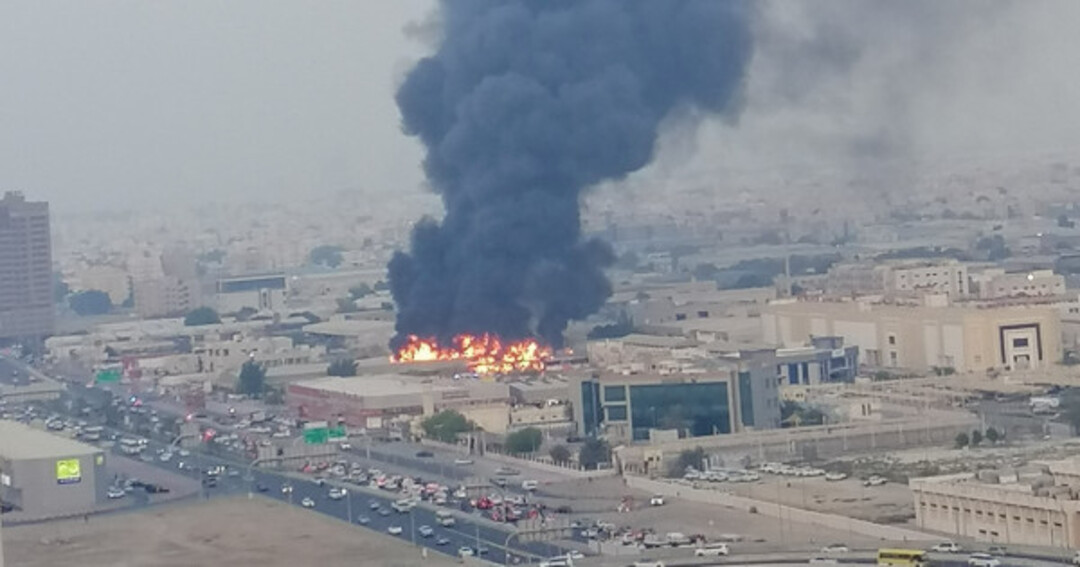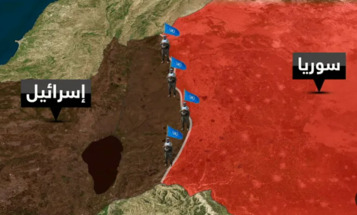-
Drones becomes Iranian, Houthi’s weapons choice

A Houthi drone attack near Abu Dhabi airport killed at least three people and sparked multiple explosions in the United Arab Emirates' capital on 17th January 2022An Abu Dhabi police statement said three tanker trucks carrying fuel exploded in the emirate's Mussafah area after catching fire, with preliminary investigations pointing to a drone attack.
The Houthi have claimed previous attacks on Abu Dhabi's airport. The Houthi have used bomb-laden drones to launch crude and imprecise attacks aimed at Saudi Arabia and the UAE over the course of the war. The group has also launched missiles at Saudi airports, oil facilities and pipelines, as well as used booby-trapped boats for attacks in key shipping routes.
United Nations Secretary-General Antonio Guterres condemned the attack on the UAE and urged "all parties to exercise maximum restraint and prevent any escalation", his spokesperson said. French Foreign Minister Jean-Yves Le Drian said the attack threatened regional stability.
The attack came in the wake of losing the military offensive in Yemen - Ma'rib. The UAE, a member of the coalition, has armed and trained local Yemeni forces that recently joined fighting against the Houthis in Yemen's energy-producing Shabwa and Marib regions.
The attack could be considered as another drone threat faced by the UAE and the region’s unless the regional states can find a solution to deter hostility from regional state and non-state actors, they will remain vulnerable to attacks.
The increased use of drones by Iran and its allies for surveillance and attacks across the Middle East is raising alarms in Washington. The United States has hit Iran with fresh sanctions for supplying lethal drones and related material to insurgent groups in Iraq, Lebanon, Yemen, and Ethiopia.
The Treasury Department on 29th_October 2021 announced the new sanctions against two senior members of the Islamic Revolutionary Guards Corps (IRGC), two other individuals, and two companies that the United States says are affiliated with the IRGC's unmanned aerial vehicles (UAV) program. The Treasury Department statement said Iran’s proliferation of UAVs across the region threatens international peace and stability.
The Houthi rebels used drones to target and assassinate Yemeni leaders and they were also striking key national infrastructure in places like Saudi Arabia. Even the United States, sightings and illegal actions of drones flying over cities and close to government facilities in some cases speak to the fact that drone operations may be a thing in the future. [9]

The technology of today, while impressive, is developing the tactics and techniques of future terrorist attacks. The most prescient current technology that will enable future terrorist attacks is the drone.
The Drones, especially those that are used for military purposes, have become a serious threat to many countries of the world, most notably the "Switchblade" type. In addition to being used to gather information from beyond the borders of countries, they are also capable of launching "suicide attacks". The danger also lies in the difficulty of detecting them by conventional radars, especially modern drones that have stealth capabilities.
It is necessary to support countries facing the challenges of militias - A Houthi, armed factions and chaos, in order to impose security and disarm those militias. It is so important to reach an international forums or conferences, showing the dangers of using Iran and its pro militias, especially in Iraq, Yemen, Syria, Lebanon and other countries. The united state and the UN, Security Council need to Imposing sanctions against the Houthi militia in Yemen, and placing it on the terrorist list.
By: Jassim Mohammad - Levant
You May Also Like
Popular Posts
Caricature
BENEFIT Sponsors BuildHer...
- April 23, 2025
BENEFIT, the Kingdom’s innovator and leading company in Fintech and electronic financial transactions service, has sponsored the BuildHer CityHack 2025 Hackathon, a two-day event spearheaded by the College of Engineering and Technology at the Royal University for Women (RUW).
Aimed at secondary school students, the event brought together a distinguished group of academic professionals and technology experts to mentor and inspire young participants.
More than 100 high school students from across the Kingdom of Bahrain took part in the hackathon, which featured an intensive programme of training workshops and hands-on sessions. These activities were tailored to enhance participants’ critical thinking, collaborative problem-solving, and team-building capabilities, while also encouraging the development of practical and sustainable solutions to contemporary challenges using modern technological tools.
BENEFIT’s Chief Executive Mr. Abdulwahed AlJanahi, commented: “Our support for this educational hackathon reflects our long-term strategic vision to nurture the talents of emerging national youth and empower the next generation of accomplished female leaders in technology. By fostering creativity and innovation, we aim to contribute meaningfully to Bahrain’s comprehensive development goals and align with the aspirations outlined in the Kingdom’s Vision 2030—an ambition in which BENEFIT plays a central role.”
Professor Riyadh Yousif Hamzah, President of the Royal University for Women, commented: “This initiative reflects our commitment to advancing women in STEM fields. We're cultivating a generation of creative, solution-driven female leaders who will drive national development. Our partnership with BENEFIT exemplifies the powerful synergy between academia and private sector in supporting educational innovation.”
Hanan Abdulla Hasan, Senior Manager, PR & Communication at BENEFIT, said: “We are honoured to collaborate with RUW in supporting this remarkable technology-focused event. It highlights our commitment to social responsibility, and our ongoing efforts to enhance the digital and innovation capabilities of young Bahraini women and foster their ability to harness technological tools in the service of a smarter, more sustainable future.”
For his part, Dr. Humam ElAgha, Acting Dean of the College of Engineering and Technology at the University, said: “BuildHer CityHack 2025 embodies our hands-on approach to education. By tackling real-world problems through creative thinking and sustainable solutions, we're preparing women to thrive in the knowledge economy – a cornerstone of the University's vision.”
opinion
Report
ads
Newsletter
Subscribe to our mailing list to get the new updates!






















